Introduction
Straddling the Coromandel Coast of the Bay of Bengal, Chennai, the capital of Tamil Nadu is a city steeped in history and brimming with opportunity. Often referred to as the “Gateway to South India,” Chennai serves as a vital link for trade and commerce, not just regionally, but on a global scale. Its bustling port facilitates international trade, while its well-developed infrastructure attracts major corporations, particularly in the automobile industry, earning it the moniker “Detroit of India.” Chennai is also a hub for healthcare and education, boasting world-class medical facilities and prestigious universities.

This dynamic metropolis is home to over 8.7 million people, making it the sixth-largest city in India. Chennai’s significant population fuels a thriving economy, placing it among the top ten in the country. With its large talent pool, robust infrastructure, and strategic location, Chennai is a major contributor to India’s economic growth. However, managing the movement of such a vast population within the city limits presents a significant challenge.
To ensure the smooth flow of people and goods, Chennai boasts a multi-modal transportation network. Buses form the backbone of public transport, offering extensive coverage throughout the city. The relatively new Chennai Metro, with its growing network of underground and elevated lines, provides a fast and comfortable travel option. Suburban railways, meanwhile, efficiently connect Chennai with its neighboring areas.
However, managing increasing traffic congestion and ensuring efficient intra-city travel necessitates a robust and reliable rapid transit system. This is where the Chennai Mass Rapid Transit System, or MRTS, steps in. In the next section, we’ll delve into the MRTS, its history, functionalities, and its significance in keeping Chennai, and its economy, on the move.
Need of MRTS
Chennai’s economic boom, coupled with its ever-expanding population, placed immense strain on the city’s existing transportation infrastructure. Chennai’s burgeoning population and economic prosperity in the latter half of the 20th century presented a significant challenge: a transportation system on the verge of collapse. Here’s a breakdown of the specific needs that necessitated the creation of the Chennai MRTS:
- Soaring Population: Between 1971 and 1991, Chennai’s population witnessed a staggering increase of over 60%, ballooning from 4.2 million to nearly 6.7 million. This rapid growth resulted in a surge in travel demand, putting immense pressure on existing infrastructure.
- Traffic Congestion and Gridlock: As the number of vehicles on the road multiplied, so did traffic congestion. A 1979 study by Rail India Technical and Economic Services (RITES) revealed a nightmarish reality: the average traffic speed in Chennai had plummeted to a measly 10 kilometers per hour. This gridlock translated into longer commutes, reduced productivity, and frustration for residents.
- Economic Impact: The crippling traffic congestion started to impede Chennai’s economic potential. Businesses faced logistical hurdles due to unreliable travel times, and the city’s attractiveness as an investment destination began to wane.
- Environmental Concerns: Traffic congestion also led to a rise in air pollution. With vehicles stuck in traffic for extended periods, exhaust fumes accumulated, posing a serious health risk to residents.
- Inadequacy of Existing Transport System: While Chennai had a well-established bus network, it was struggling to cope with the ever-increasing demand. Buses often became overcrowded and unreliable, leading to long wait times and frustration for commuters.
The need for the Chennai MRTS arose from the urgent requirement for a high-capacity, rapid transit system that could alleviate traffic congestion, improve travel times, and promote sustainable urban mobility for Chennai’s burgeoning population and thriving economy. Recognising the urgent need for a rapid transit solution, planners in Chennai looked towards successful metro systems in other major cities around the world. Cities like London, Tokyo, and Paris served as models, demonstrating the efficiency and capacity of rapid rail networks in managing large-scale urban mobility.
Proposal
In 1983, the Madras Metropolitan Development Authority (MMDA), then known as the Madras Metropolitan Development Board (MMDB), submitted a proposal to the Government of India for the construction of a Mass Rapid Transit System (MRTS) in Chennai. The proposed system envisioned a network of elevated railway lines, designed to decongest city roads and provide a faster, more reliable mode of public transportation.
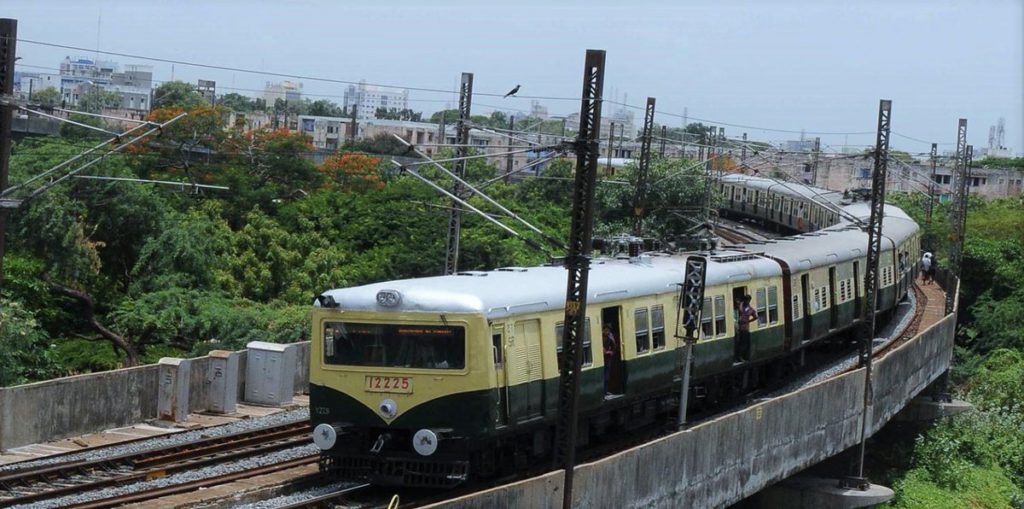
To streamline the transportation system in Chennai, several studies were conducted, including the Madras Area Transportation Study in 1968, the Integrated Transport Plan in 1977, and the Madras Route Rationalisation Study in 1986. These studies identified key transportation routes, one of which is the rail line from Kasturba Nagar to Manali Road. They recommended building a rail-based Mass Rapid Transit System (MRTS) along the Buckingham Canal, connecting to the existing suburban rail network. The proposed MRTS would be a 59.38 km (36.90 mi) loop line linking Chennai Beach and Tiruvottiyur.
The MRTS proposal underwent a thorough evaluation process by the central government. Financial feasibility, route alignment, and environmental impact were all meticulously assessed. After several years of deliberation, the project finally received approval in 1990. Following the approval from the government, construction of the Chennai MRTS commenced in 1995. The project was a mammoth undertaking, involving the creation of elevated railway corridors, stations, and the acquisition of rolling stock. The first phase of the MRTS, connecting Beach and Washermanpet, was inaugurated in 2002, marking a significant milestone in Chennai’s transportation history.
Lines
The Chennai Mass Rapid Transit System (MRTS) serves as a critical artery for intra-city travel, offering a fast and convenient alternative to congested roads. Currently, a single 19.34-kilometer elevated line stretches from Chennai Beach Station in the north to Velachery in the south.
Key Coverage Areas:
- The MRTS connects major hubs like Chennai Fort, Park Town (opposite Chennai Central Station), and Guindy (near IIT Madras).
- It serves popular destinations like Marina Beach (Chepauk), Egmore (Light House), and the Chennai Trade Centre (Samayapuram).
- Stations like Perambur and Pallavaram provide access to nearby industrial areas.
- The line caters to residential areas like Triplicane, Thiruvallikeni, Taramani, and Velachery.
The Chennai MRTS, with its strategically placed stations, offers efficient and sustainable urban mobility for a significant portion of Chennai’s population.
Key Extension Plans
The Chennai MRTS, while crucial for the city’s transportation network, currently faces limitations due to its single operational line. However, there are promising plans for extension in motion:
- Velachery to St. Thomas Mount: This extension, under construction as of June 2024, is a much-anticipated project. It will extend the MRTS line by 5 kilometers southward, connecting it with the Chennai Suburban Railway network and the Chennai Metro at St. Thomas Mount station. This critical link is expected to:
- Improve connectivity between the MRTS and other major transportation systems in the city.
- Facilitate easier access to workplaces and educational institutions located near St. Thomas Mount.
- Potentially boost ridership on the MRTS by catering to a wider catchment area.
Further Extensions
Discussions and proposals for further extensions beyond St. Thomas Mount exist. Here are two possibilities:
- Velachery to Tambaram: The Chennai Metro Rail Limited (CMRL) is exploring the feasibility of extending the MRTS from Velachery towards Tambaram. This extension, with potential endpoints at either Guindy or Little Mount stations, could add another 8-10 kilometers to the network. It would cater to the densely populated areas and commercial hubs along the corridor.
In a move to bolster Chennai’s public transport network, Chennai Metro Rail Limited (CMRL) has joined forces with SYSTRA MVA Consulting (India) Pvt. Ltd. This collaboration focuses on reassessing the feasibility of a Mass Rapid Transit System (MRTS) connecting Tambaram and Velachery, a 26-kilometer stretch. The project also explores the possibility of extending the line further, with Guindy and Little Mount stations identified as potential endpoints.
- Beach Station to Thiruvottiyur: This northward extension, while not in concrete stages of planning, has been floated as a potential future project. It could significantly expand the MRTS’s reach, serving the northern parts of the city with limited rapid transit options.
Ridership of the Chennai MRTS
The ridership of the Chennai MRTS has fluctuated over the years, reflecting factors like infrastructure development, competition from other modes of transport, and economic conditions. Here’s a breakdown of the ridership picture:
- Early Days (2002-2010): Following its inauguration in 2002, the MRTS witnessed a steady rise in ridership, reaching approximately 1 lakh (100,000) commuters daily by 2010. This initial growth indicated the public’s demand for a rapid transit solution.
- Impact of Metro (2010 onwards): The arrival of the Chennai Metro in 2010 presented some challenges for the MRTS. The Metro’s modern infrastructure, wider network coverage, and competitive fares attracted a portion of the ridership.
- Pre-Pandemic Levels (2019): Despite the competition, the MRTS ridership continued to grow, reaching an estimated pre-pandemic daily average of around 1.16 lakh (116,000) commuters. This indicated the system’s continued relevance for specific travel corridors.
- COVID-19 Impact (2020-Present): The global pandemic significantly impacted public transportation use. The MRTS ridership saw a sharp decline, dropping to an average of around 14,798 daily commuters in September 2020.
- Recovery and Integration Efforts (2023-Present): As of 2023, ridership figures suggest a gradual recovery, with estimates reaching around 0.25 million (250,000) daily commuters. Additionally, there are ongoing talks about the potential integration of the MRTS with the Chennai Metro, which could further streamline ticketing and improve connectivity for passengers.
While the ridership of the Chennai MRTS has faced challenges, it remains a vital transportation link for many residents. The system’s future looks promising, with potential integration with the metro and ongoing efforts to modernize its infrastructure.
The Chennai MRTS Takeover by CMRL
The Chennai MRTS, currently operated by Southern Railway, faces limitations as a standalone system. However, a potential takeover by the Chennai Metro Rail Limited (CMRL) has emerged as a promising development for the city’s public transport network. Let’s delve into the current conditions, the rationale behind the takeover, its progress, and the potential benefits.
Current Conditions:
- Limited Network: The Chennai MRTS boasts a single operational line spanning 19.34 kilometers. While crucial, it fails to provide comprehensive coverage across the city.
- Ridership Fluctuations: The ridership on the MRTS has fluctuated over the years, impacted by factors like the emergence of the Chennai Metro and the COVID-19 pandemic. As of 2023, estimates suggest a daily ridership of around 0.25 million (250,000) commuters.
- Integration Challenges: The lack of seamless integration between the MRTS and the Chennai Metro can pose an inconvenience for commuters relying on inter-system transfers.
Why a Takeover?
- Network Expansion: A CMRL takeover could pave the way for the much-needed expansion of the MRTS network. Plans for extensions like Velachery to St. Thomas Mount and beyond are already underway under CMRL’s purview.
- Improved Integration: A unified system under CMRL could lead to better integration between the MRTS and the Chennai Metro. This would translate to smoother inter-system transfers and a more convenient experience for passengers.
- Standardization and Efficiency: A single operator could potentially streamline operations, maintenance procedures, and ticketing systems, leading to improved overall efficiency.
- Increased Ridership: A more extensive and better-integrated network, coupled with potentially standardized fares, could attract more riders, boosting ridership figures for both the MRTS and the Metro.
How is the Takeover Being Processed?
- In-Principle Approval (2022): In a significant development, Southern Railway granted in-principle approval for CMRL to take over the MRTS in May 2022.
- Detailed Discussions: Following the initial approval, detailed discussions between Southern Railway, CMRL, and the Government of Tamil Nadu are underway to iron out the complexities of the handover process, including aspects like staffing, infrastructure transfer, and financial agreements.
Objectives of the Takeover:
- Creating a Unified Rapid Transit Network: The primary objective is to establish a unified rapid transit network in Chennai, offering seamless connectivity across the city.
- Boosting Public Transport Ridership: The takeover aims to incentivise public transport usage by providing a more efficient and user-friendly network.
- Enhancing Urban Mobility: A unified system could significantly improve intra-city travel, potentially reducing traffic congestion and air pollution.
| Latest Update Chennai Metro Rail Limited (CMRL) has taken a proactive step towards improving the Chennai MRTS system. Officials have begun a comprehensive inspection of MRTS stations to identify areas for upgrade and potential new amenities. This initiative signifies CMRL’s commitment to enhancing the passenger experience on the entire rapid transit network of the city. The proposal has been sent to the Railway Board for its in-principle approval on which a decision is expected by July 2024. |
Challenges Ahead
The Chennai MRTS, despite its role as a crucial artery for intra-city travel, faces several challenges that need to be addressed to ensure its continued success and integration into a broader public transport network. Here’s a closer look at some of the key hurdles:
Limited Network and Coverage:
- Single Line: Currently, the MRTS operates on a single 19.34-kilometer elevated line. This restricts its reach and leaves significant portions of the city without access to rapid transit.
- Population Growth: Chennai’s population is projected to continue growing, placing a strain on the existing MRTS capacity and highlighting the need for expansion.
Integration Challenges:
- Ticketing Discrepancies: Separate ticketing systems between the MRTS and the Chennai Metro can be inconvenient for commuters who rely on inter-system transfers.
- Limited Connectivity: The lack of physical connections between some MRTS and Metro stations necessitates longer walking distances or additional modes of transport for transfers, creating a less seamless experience.
Ridership Fluctuations:
- Pre-Pandemic Decline: Even before the COVID-19 pandemic, ridership on the MRTS witnessed a decline following the introduction of the Chennai Metro in 2010.
- Post-Pandemic Recovery: The pandemic significantly impacted public transport use, and the MRTS is still in the midst of recovering its ridership numbers. Factors like competition from other modes of transport and potential fare structures need to be addressed to incentivize ridership growth.
Infrastructure Upgradation:
- Ageing Infrastructure: The initial phase of the MRTS was constructed in the late 1990s. Regular maintenance and potential upgrades might be necessary to ensure the system’s long-term safety and reliability.
- Station Amenities: Some MRTS stations might benefit from improved passenger amenities like better lighting, enhanced signage, and accessibility features for differently-abled commuters.
Funding and Project Completion:
- Securing Funds: The expansion of the MRTS network, including the ongoing Velachery-St. Thomas Mount extension and proposed further extensions require significant funding. Public-private partnerships or central government support might be crucial.
- Project Delays: Land acquisition and bureaucratic hurdles can lead to delays in project completion, impacting the timeline for expanding the network and improving connectivity.
Benchmarking the Chennai MRTS: A Roadmap for Continued Success
As a policymaker, fostering a robust and efficient public transport network is paramount. The Chennai Mass Rapid Transit System (MRTS) stands as a significant player in this arena. Let’s delve into a comparative analysis of the Chennai MRTS with its counterparts in other Indian cities, highlighting its strengths and charting a course for its continued success.
Strengths of the Chennai MRTS:
- Pioneering Spirit: The Chennai MRTS holds the distinction of being the first elevated railway line in India, opening its doors in 1995. This pioneering spirit translates into a valuable experience for future expansion projects. The lessons learned from construction, operational challenges, and ridership patterns can inform the development of new corridors and stations, ensuring optimal efficiency from the get-go.
- Focus on Intra-City Travel: Unlike some MRTS systems in other cities that handle both intercity and intracity commutes, the Chennai MRTS is dedicated to serving intra-city needs. This targeted approach allows for a laser focus on the specific requirements of Chennai’s urban landscape. Station placement can be optimized to cater to high-density residential areas, commercial hubs, and educational institutions, maximizing ridership potential within the city limits.
- Planned Integration with Suburban Railways: The strategic extension of the MRTS to St. Thomas Mount, currently under construction, will provide a crucial link to the Chennai Suburban Railway network. This seamless transfer will benefit a wider range of commuters. Passengers travelling from suburban areas will have a convenient option to connect with the MRTS for faster intra-city travel, reducing reliance on congested roads.
Learning from Other Systems:
- Network Reach: While the Chennai MRTS serves a vital role, its network pales in comparison to the expansive MRTS systems in cities like Delhi and Hyderabad. Studying their route planning and ridership patterns can offer valuable insights for future expansion plans in Chennai. Analyzing data on high-demand corridors, population density projections, and potential ridership hotspots can inform the prioritization of future extensions, ensuring the network caters to areas with the greatest need.
- Multi-modal Integration: Cities like Bangalore showcase the power of successful integration between their MRTS and other modes of public transport like buses and auto-rickshaws. Implementing similar strategies in Chennai can create a more user-friendly network. A well-coordinated system with efficient first and last-mile connectivity options, like feeder buses and designated pick-up/drop-off zones for auto-rickshaws, will encourage ridership by offering a seamless travel experience.
- Public-Private Partnerships (PPPs): Several Indian MRTS projects leverage PPPs to accelerate development. Chennai can explore similar models to attract private investment for network expansion and modernization initiatives. Partnering with private entities can inject much-needed capital into the system, enabling faster completion of expansion projects and potentially leading to the adoption of innovative technologies for improved passenger experience.
Capitalising on Strengths and Charting a Course for the Future:
- Strategic Expansion: The Chennai MRTS can adopt a phased expansion approach, prioritizing high-demand corridors based on ridership projections and population density data. The proposed Velachery-Tambaram extension serves as a prime example of this strategy. By focusing on areas with the greatest need for rapid transit, the expansion can maximize ridership potential and contribute to decongesting Chennai’s busy roads.
- Benchmarking for Efficiency: Regularly benchmarking operations against other successful MRTS systems can help identify areas for improvement in the Chennai MRTS. This could involve aspects like ticketing systems, train frequency optimization based on peak hours, and station maintenance protocols. Streamlining operations will enhance passenger experience by reducing wait times, improving reliability, and ensuring a clean and well-maintained environment within stations.
- Integration with Upcoming Projects: Chennai’s upcoming Metro expansion plans present a golden opportunity for strategic integration. By creating a comprehensive rapid transit network with seamless transfers and wider connectivity, both the MRTS and the Metro can witness a significant boost in ridership. Collaborative planning that ensures efficient interchange stations and integrates ticketing systems will incentivize passengers to utilize both systems for their travel needs.
- Technology Adoption: Embracing advancements in technology can position the Chennai MRTS at the forefront of Indian rapid transit systems. Implementing smart ticketing systems with contactless payment options will enhance convenience for passengers. Real-time information displays at stations and within trains will improve passenger experience by providing accurate arrival and departure times. Long-term, exploring the potential of autonomous train operations, while ensuring safety protocols are rigorously met, could further optimize efficiency and reduce operational costs.
Conclusion
The Chennai MRTS, despite its current limitations, serves as a vital artery for intra-city travel in the bustling metropolis. By building on its strengths, embracing strategic expansion plans, and fostering integration with the Chennai Metro, the MRTS can evolve into a more robust, user-friendly, and sustainable rapid transit system.
The recent developments, like CMRL’s inspection of MRTS stations and the proposed takeover, signal a commitment to revitalizing the system. By prioritizing strategic expansion based on ridership data, benchmarking operations for efficiency, and embracing technological advancements like smart ticketing and real-time information displays, the Chennai MRTS can cater to the growing needs of Chennai’s population. Furthermore, seamless integration with the Chennai Metro will create a comprehensive rapid transit network, encouraging public transport use and fostering a more sustainable urban environment. The future of the Chennai MRTS is bright, with the potential to become a model for efficient and user-friendly rapid transit in India.
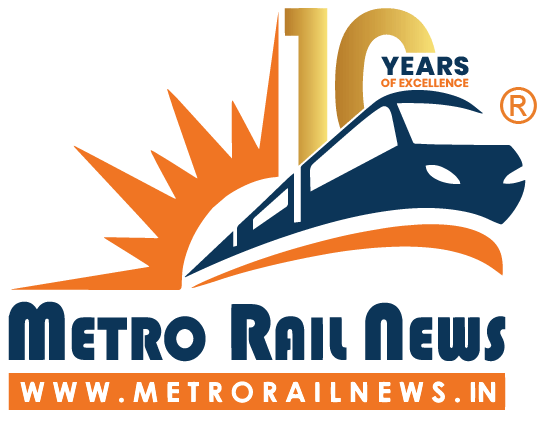



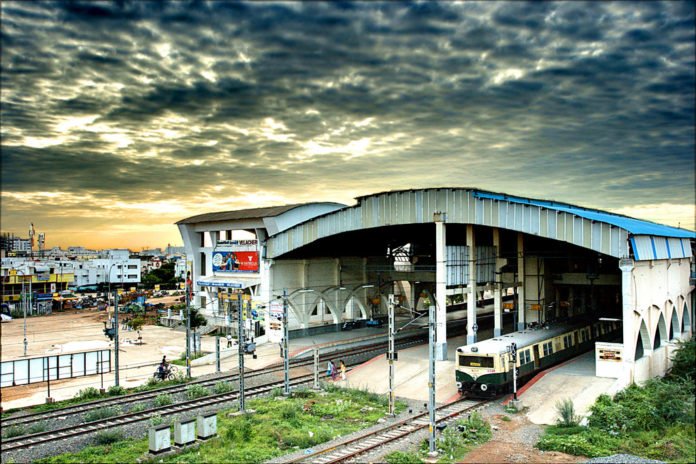

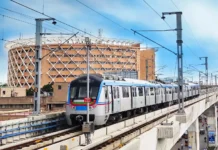

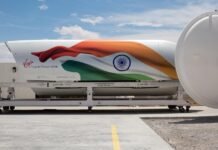
The report is full of inaccuracies like date of inauguration, names of stations, etc. I doubt if the reporter has even travelled once on this route.